Here in Germany, ramson is an undeniable herald of spring.
Only for a couple of weeks, this intense herb can be found fresh in grocery stores and farmers markets. Literally called “bear’s garlic” where I come from, it is a popular addition to soups, salads, and much more during its short season.
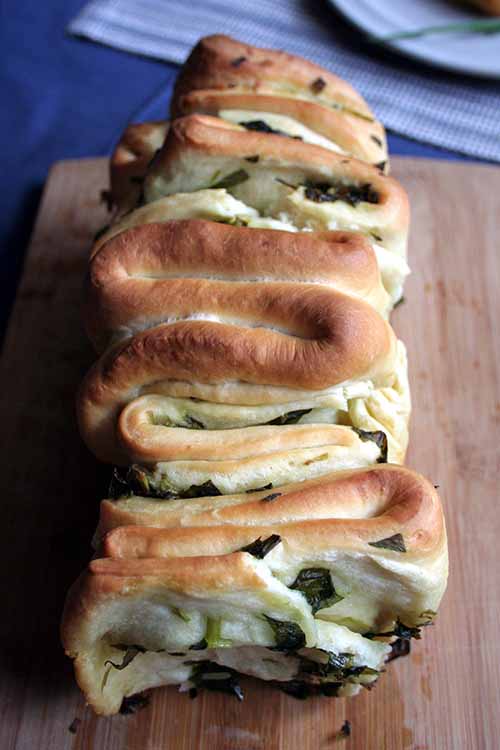
Therefore, I’m constantly on the lookout for new recipes, to include the rare ingredient in my dishes when it’s available in all different ways. And as part of this fancy pull-apart bread, it works just perfectly.
Let’s first take a look at what makes these green leaves so special, and what distinguishes the herb from other members of the onion family, to which it belongs.
Where Does it Come From & What Makes it Special?
The colloquial term “bear’s garlic” has an interesting story behind it. It is said that bears enjoyed the herb after hibernation, attracted by its strong smell.
Today, you can recreate the bears’ enthusiastic feeling yourself, when wandering through deciduous forests in the temperate zone where ramson naturally occurs, in shady places on humid soil, on the banks of creeks or rivers.
Ramson goes by other names as well – it’s also known as buckram, wild garlic, wood garlic, or bear leek. Its scientific botanical name is Allium ursinum. But it is closely related to A. tricoccum, or North American wild leeks, also known as ramps.

The plant can grow to between 4 and 20 inches in height with broad, bright green leaves. The blossoms are white and delicate, sitting on straight, single stems. Ramson is found more widely across Europe, whereas ramps are more commonly seen sprouting in the springtime in the U.S.
It has a more subtle flavor than regular garlic, though it shares the same intense smell. Sulfurous substances – which also occur in onions – are responsible for this very specific aroma.
Collecting Tips
The most dangerous problem that may occur while foraging is to confuse ramson with similar-looking but toxic plants. The most popular ones to mix it up with are:
• Lily of the valley
• Crocuses, especially before blossom
• Leaves of young arum lilies
However, there is one way to recognize real ramson. Take a leaf, roll it between your fingers, and see if it exudes the unmistakable aroma of garlic. If it does, you’ve found the right plant!
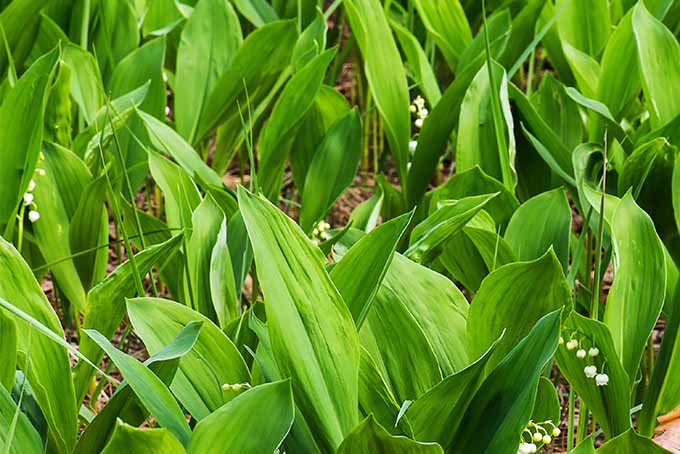
One other sign you should pay attention to is that ramson grows with long, single stems coming out of the ground rather than bundles.
A Note of Caution:
No matter how much you trust your senses, it’s always best to play it safe.
When you’re on your own, if you’ve had only a few experiences distinguishing plants in the wild, leave the plants where they are!
Please leave the foraging up to the experts, and never try to find the right one by tasting! Better to be safe than sorry.
Growing Your Own
Whether you’re already an expert in growing your own herbs or you would like to start doing it yourself, ramson is perfectly suited for this purpose.
It might not have the same intensity as the wild-grown variety when it’s planted at home, but it’s fun to do, and you can be sure that it’s 100 percent organic.
Even lazy gardeners can benefit from this wonderful herb, as it is undemanding, and only needs to be watered during persistent drought.
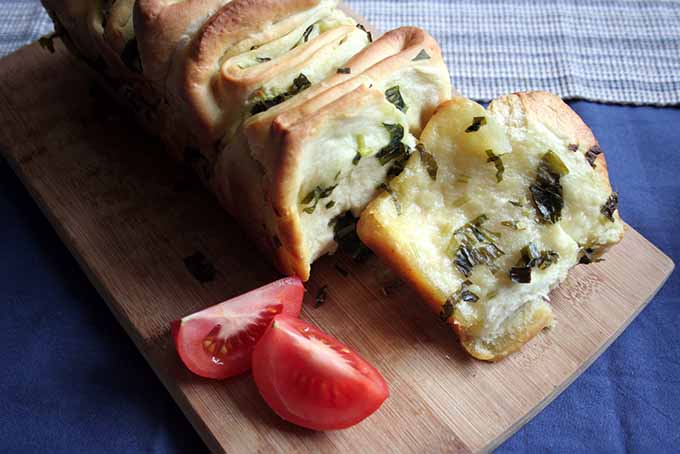
Plus, in the end, every part of the plant can be used. Pluck the aromatic leaves, cut the buds or blossoms, and pull out the bulb from the ground after the flowering period (unless you’d like your ramson to come back next year).
Picking the full plant is actually a growing problem in the U.S., where ramp foragers have begun to take more than their fair share. Snipping just a few leaves is recommended, rather than digging up whole clusters of the herb by its roots.
Not only does this leave less to share with other foraging animals and critters, it means the plant will become less likely to continue to grow and flourish in areas where it has thrived for ages.
If it isn’t possible for you to grow your own, you can sometimes find it in grocery stores or at local farmers markets. But how can you keep this sensitive herb fresh for use?
Eat Quickly for Best Results!
When collecting ramson on your own or even if you’re buying it, it’s best to get only as many – or few – leaves as you plan to consume. This is a delicate herb with a very short shelf life, and in some areas it is only available in limited supply.
If you aren’t able to use it right away and absolutely must store it instead, wrap the leaves in moist paper towels and keep in the vegetable drawer of your fridge. Use it up within two, maybe a maximum of three days.
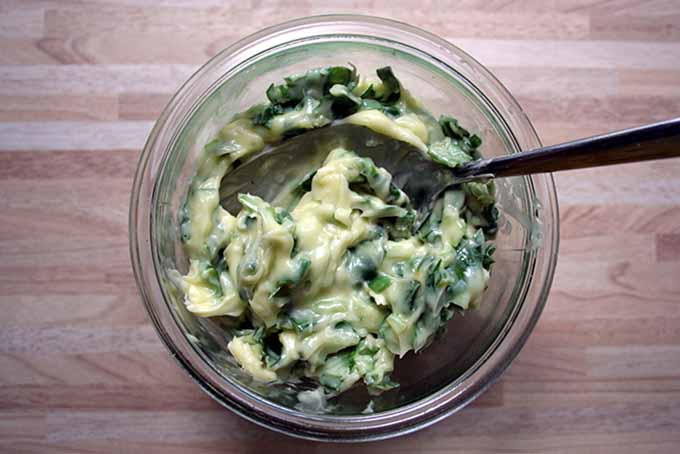
The possibility of drying or freezing does exist, but you should be aware of the fact that this will have an impact on the fresh, spicy flavor, which will mostly be lost after this treatment.
If you’re freezing it, wash and dry the leaves, remove the stems, and chop. Stems can be added to a homemade vegetable stock or soup, for a touch of added flavor.
The very best way to enjoy it is fresh and raw. This way, you will also benefit from the highest level of vitamin C content in the leaves. If you’re looking for alternative healthy herbs to add to your menu, ramson is definitely a good choice.
One great tip is to either consume it directly (I like to sprinkle it on top of eggs or salads), or you could also make a spicy oil out of it.
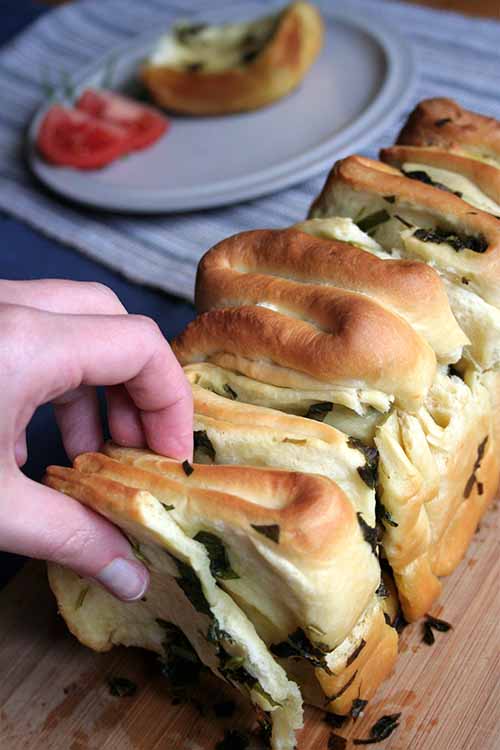
For this, mix the chopped ramson with olive oil and salt, and keep it in a sealed jar in the refrigerator. Again, this is highly perishable. Though the flavor will develop a bit more with time, it is best to consume fresh herbal oils made with tender leaves quickly. Keep it completely covered with oil, like you do with pesto.
The overall aroma is also more intense right before the plant is in full bloom. After the flowering period, you will hardly recognize the taste.
Beyond these quick and easy fresh applications, what kind of recipes can you use it in? Let’s take a look!
Working With it in the Kitchen
Like I said, possibly the most fantastic aspect of ramson (besides its delicious flavor) is the fact that all parts of it are edible.
The leaves are just perfect for seasoning soups, dips, breads, meat, or vegetarian dishes. They pair well with all kinds of flavor profiles, and make a wonderful addition to fresh green salads.
Also, the leaves and the delicate blossoms make a fancy (and flavorful) garnish.
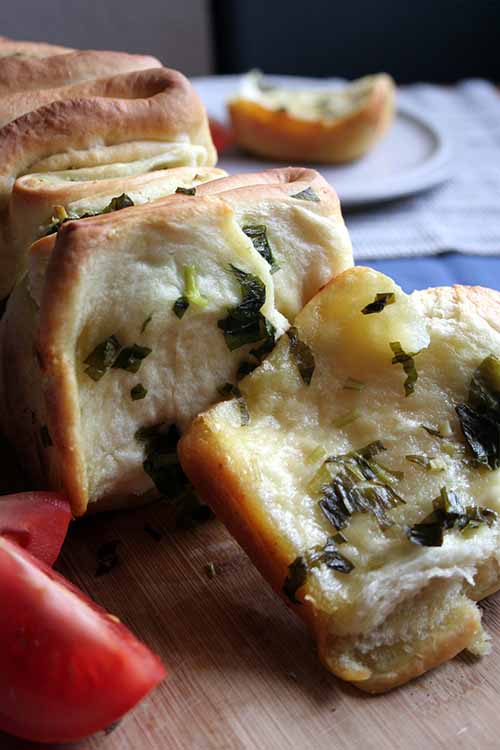
The roots can be prepared in the same way as the white portions of spring onions. Chop them up, add them to a sauté or stir fry, and you’ll get a burst of fresh, garlicky flavor.
A really fantastic idea, my favorite by far if I’m doing anything other than eating these fresh, is this recipe for pull-apart bread.
As I see it, this is the sophisticated older sister of common garlic bread. Its extravagant look makes a great impression on the table.
Plus, if ramson season is over, you don’t necessarily have to put the recipe away until next year (though it’s certainly fun to maintain seasonal cooking and baking traditions)! Simply substitute with other fresh herbs, like parsley, chives, or basil.
It won’t be exactly the same, but variations on this recipe are also delicious. This way, you can make use of the general dough recipe the whole year round. It is an amazing choice for picnics, and backyard barbecues, too.
Insider’s Tip:
The basic dough can also be used to make sweet pull-apart varieties. Just mix the butter with additions like cinnamon, vanilla, lemon or orange zest, or use fruit jam, or even chocolate spread to cover the dough.
The baking and resting times stay the same. It’s simply delicious in any way, sweet or savory!
Need a new gadget for your kitchen to zest that citrus? Check out Foodal’s review of the best microplanes and zesters.
The Recipe
- 4 cups flour
- 1 teaspoon + 1 pinch salt
- 1 1/2 cups milk,
- 20 g fresh yeast (approx. 3/4 oz)
- 1 teaspoon sugar
- 1 1/2 sticks unsalted butter very soft, divided
- 100 g fresh ramson (approx. 3 handfuls)
- In a large bowl, mix flour and 1 teaspoon salt.
- In a small saucepan, warm up the milk until lukewarm. Take off the stove. Crumble yeast into the warm milk, add sugar, and stir until yeast and sugar have dissolved.
- Add the yeast-milk mixture and 2 tablespoons butter to the flour mixture, and knead with a standing kitchen mixer or by hand until smooth.
- Cover with a clean kitchen towel and leave the dough to rise in a warm place for approximately 45 minutes, or until its volume has doubled.
- Meanwhile, wash and dry the ramson. Chop into fine strips and mix with the remaining butter, and a pinch of salt.
- Preheat the oven to 190°C/375°F. Line your loaf pan with parchment paper and put it in an upright position. Dust your countertop with some flour.
- Turn the dough onto your floured countertop and knead once more, for no more than 20 seconds. Roll into a rectangle of approximately 20 by 15 inches. Spread the herb-butter mixture on top.
- Cut lengthwise into 5 equally sized strips. Fold the strips like an accordion, and put each folded piece into the upright loaf pan. Cover, and leave to rest for 15 minutes.
- Arrange the pieces in the loaf pan. Then slide into the lower part of the oven and bake for 45-50 minutes, until light brown and crispy.
- Lift the bread out of the pan with the help of the parchment paper. Enjoy warm or cold.
Pro Tip: If you think the surface is getting too dark, cover with some aluminum foil during the last 10-15 minutes of baking.
Cooking by the Numbers…
Step 1 – Combine the dry ingredients
First, combine the flour and salt in a large bowl. Set this aside.
Step 2 – Combine the yeast and sugar with warm milk
Place the milk in a small saucepan over medium heat, and heat until lukewarm, being careful not to scald it.
Remove from heat, and crumble the yeast into the milk. Add the sugar, and stir until completely dissolved.
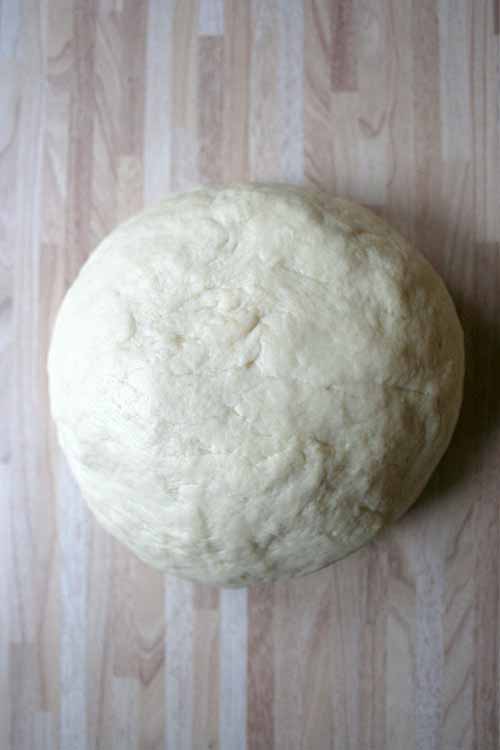
Unfamiliar with working with yeast? Give Foodal’s Guide to Baking With Yeast a look now.
Step 3 – Combine the mixtures, and knead the dough
Add the warm mixture and two tablespoons of butter to the flour mixture, and stir to combine. Knead with a standing mixer or by hand until a smooth dough forms.
Need a few pointers on kneading? We have a guide for that, too! Check it out here.
Form the dough into a ball, place on a greased cutting board or baking sheet, and cover with a clean kitchen towel. Place in a warm place to rise (an oven with the light bulb on is usually a good spot) for about 45 minutes, or until doubled in size.
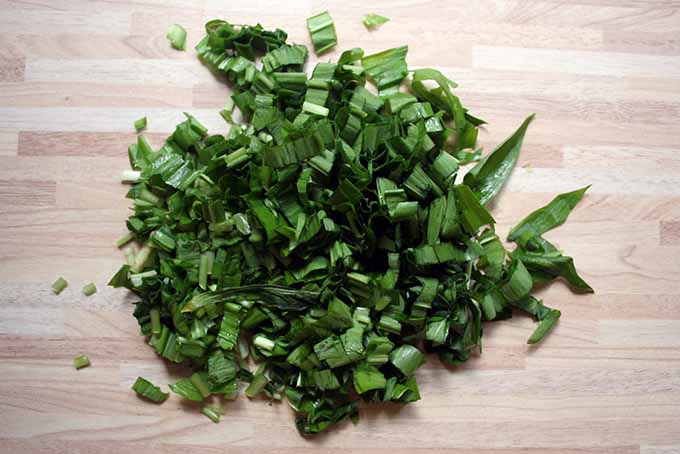
Step 4 – Make the ramson compound butter
While you wait, wash the ramson, and dry it carefully with paper towels, or in a salad spinner. Chop it fine. Then make a compound butter by stirring the chopped herbs into the remaining 10 tablespoons of softened butter, along with a pinch of salt.
If you want to do something different with this recipe, use whatever herbs you like to make the compound butter, add your favorite warming spices to the softened butter for a sweet version, or skip this step and allow your selection of jam or chocolate spread to warm to room temperature.
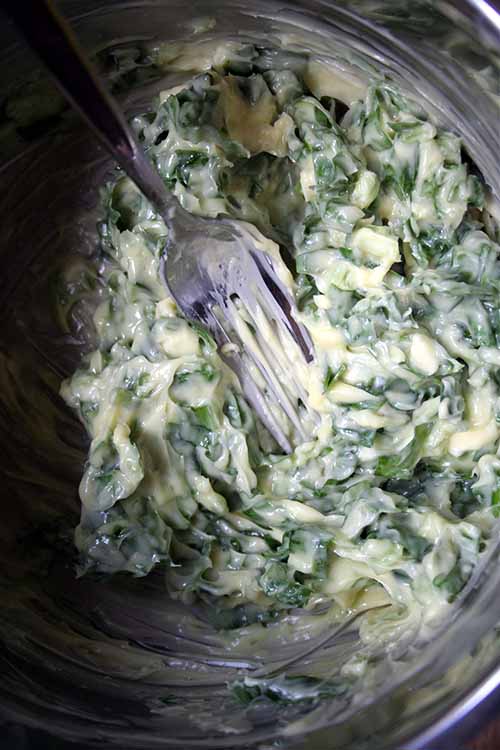
Step 5 – Preheat the oven and prepare your pan
Preheat the oven to 375°F, and place a rack on the lowest setting. Line your loaf pan with parchment paper.
Be sure to tear off a large enough piece that it leaves a bit of an overhang on either side of the pan – you will be able to use this as a sling to easily remove the bread from the pan once it’s done.
Step 6 – Knead the dough, and roll it out
Dust your butcher block, large cutting board, or clean countertop with some flour, and dust your hands and a wooden rolling pin as well.
When your dough has risen, punch it down and turn it onto your floured board. Knead the dough once more for about 10-20 seconds. Then roll it out into a large rectangle about 20 by 15 inches in size, sprinkling it with more flour as needed.

Step 7 – Spread with compound butter and slice
Spread the herb-butter mixture in an even layer on the dough, leaving a margin of about an inch at the edges. Slice the dough lengthwise into five strips of equal size, using a sharp knife or a pizza cutter.
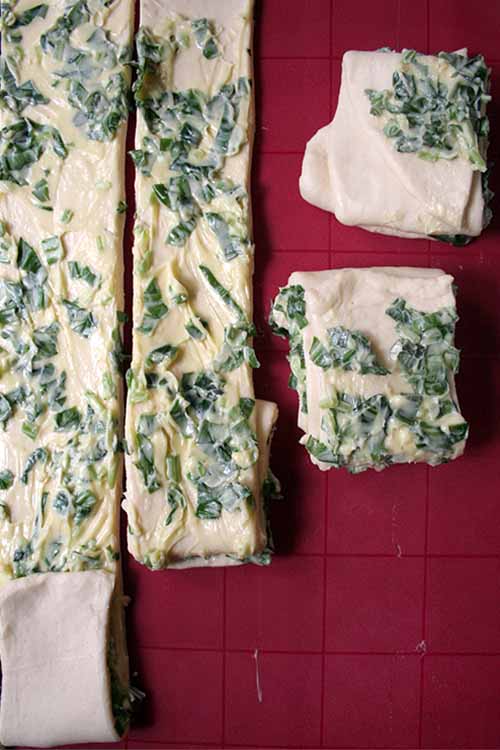
Step 8 – Fold the dough and fill your pan
Carefully fold the strips accordian-style to create five squares of equal size.
Hold your loaf pan upright vertically, being careful not to let the parchment lining fall out. Stack the folded dough in the pan, then set back on the counter and cover it loosely. Allow the dough to rest for about 15 minutes.
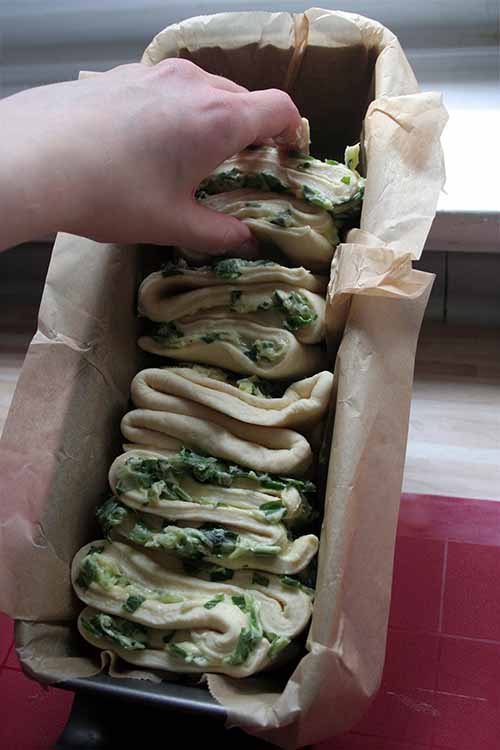
Step 9 – Bake and enjoy!
Arrange the pieces in the loaf pan so they are evenly distributed. Bake in the lower part of the oven for 45-55 minutes, or until light brown and crispy.
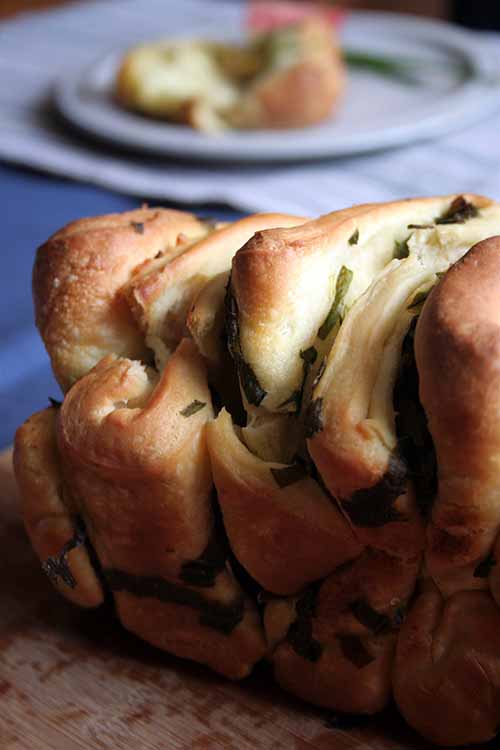
Remove from the oven. Using the parchment paper, lift the bread out and serve immediately, or cool on a wire rack.
For more egg-free baking ideas, check out our article that provides tips and recipes for baking without eggs.
The information in this article is not intended to assess, diagnose, prescribe, or treat a disease. Please consult with your health care professional before making any dietary changes.
Except where otherwise indicated, Photos by Nina-Kristin Isensee, © Ask the Experts, LLC. ALL RIGHTS RESERVED. See our TOS for more details.
About Nina-Kristin Isensee
Nina lives in Iserlohn, Germany and holds an MA in Art History (Medieval and Renaissance Studies). She is currently working as a freelance writer in various fields. She enjoys travel, photography, cooking, and baking. Nina tries to cook from scratch every day when she has the time and enjoys trying out new spices and ingredients, as well as surprising her family with new cake creations.






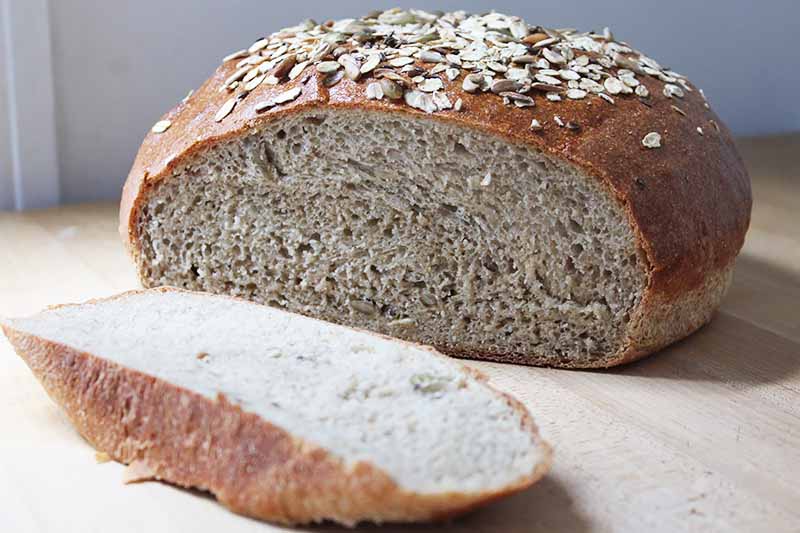
I absolutely love garlic bread. I never before heard of Ramson pull apart bread before but it looks great. I loved that you provided us with an awesome recipe. Will for sure give it a try. Will check back for more updates.
Great! I would be really interesting to hear how it worked out. Whenever you got the chance to try, let us know about your success. 🙂
This loaf looks absolutely delicious. You didn’t mention in your article how the ramson tastes, however. You did mention it has a strong odor of garlic when the leaves are bruised, but does this scent carry over to the flavor as well? Would garlic be a good substitute or does the more rare herb pretty much stand alone in flavor? Does the north American equivalent taste the same or are there some variances?
Well, I would describe its taste like a mix of garlic and spring onions or herbs, more subtle than garlic, but less strong than onions, mainly a fresh flavor. So, you could say that smell and taste match, the smell is probably a bit more intense.
If you like, you can substitute it, you just don’t have the nice green color then 😉
I haven’t tried the American variety, so – unfortunately – I can’t tell from my experience how they differ exactly.
Wow, I love freshly baked bread and this is such a good idea. If I can’t get hold of this herb, I will use something different. I do enjoy basil or oregano in a freshly baked loaf. I am going to try this recipe out, especially during the winter months. Thanks for another great idea!
Yeah, those two herbs are great additions for this bread too. It works in many ways, so I’m sure you’ll love it with ramson or without 🙂 Enjoy!
Yay! Another German-based recipe! While I’m admittedly a moron when it comes to baking, I still literally enjoy reading baking recipes such as this. Makes me want to DREAM I’m a baker, haha! Kidding aside, what I like most is I don’t seem to run out of firsts. Ramson = Bear’s garlic? A what? Again, another first heard by me only in Foodal!
Lovely recipe once again. I can’t help but salivate going through the entire post and wanting some pasta to go with this type of bread!
Thank you, I’m happy that you enjoy reading these articles and recipes. It’s always interesting to get to know something one hasn’t heard of before, right? This herb also seems to be quite an “insider”!
Maybe, imagining the smell of this bread in your oven will convince you to try it sometime..! However, in the meantime enjoy reading and dreaming 😉
This looks so delicious! I have never heard of ramson before and now I’m dying to try it. My sister has an insensitivity to garlic and onions and I wonder if this might be something she could try. I will definitely be on the lookout for this herb.
Great to hear that you like it. Unfortunately, I can’t tell you about the effects of ramson on the insensitivity. It shares natural substances with onions, as they come from the same family. But it would be great if she could tolerate this herb.. Maybe you can try to find out to which ingredient she reacts sensitive to, to see if ramson has it too.
The bread looks absolutely amazing!! Great information about how to identify the plant and how to keep it thriving in the wild. Even though I live in the United States and might not ever come in contact with ramson, I know I’ll most definitely come in contact with its North American cousin, ramps.
Thank you, I’m happy to have provided some useful info.
I think the North American variety is really similar, so it would be a well-suited substitute. In case you love the flavor and bread baking, this recipe will satisfy all your desires 🙂
I have never thought about making pull-apart bread myself.
My favourite pull apart recipe is buying a nice loaf of bread and cutting it all over like an onion, stuffing it with cheese and blooming onion and spices, herbs then putting it in the oven.
It is almost the same thing, but here you also make the dough I guess, good idea!
I know the type of general recipe you’re talking about. That one is delicious too! Both of these look really wonderful, and can be filled in many various ways.
So, once you have enough time to make this on on your own, enjoy it’s amazing taste as well!
Yum. I would like a piece of that right now, please.
I may not be able to get a hold of this ingredient, but I’m going to try. This looks so cool too. I would definitely serve this up for a family get together. I like serving stuff that not only tastes good but looks unique and interesting too.
I believe the bread basket would be empty after this.
Thanks, it’s indeed a fancy way to provide some bread. I have experimented with different fillings too. So if you don’t find ramson, that’s not a problem. It works great with different herbs, or – what I just love – filling the bread with cheese or salami for a kind of “pizza bread”. Enjoy making your very own version of it 🙂
Wow! I’ve never heard of this herb before, but now I’m really excited to try it! The pull-apart bread recipe will be really useful too. Guess what I’m making for my grandparents next time they come over?
Sounds great! I hope your grandpartens will like it, but I’m sure they do. Whenever I make this for relatives, they always enjoy it, because it always looks a bit different then the last time due to the individual folding!
I have never heard of Ramsom, but it sounds delicious and versatile – and that bread looks absolutely amazing! I like the idea that it can be stored like pesto, which will keep it fresher for longer, and of course the oil can be used to flavour other recipes, too, so there is no wastage.
Yes, that is indeed a great thing to do! As its season is limited, I really enjoy preparing the herbs like pesto. And you’re right about the additional aspect to simply flavor other recipes with it, too. This way, you get the best out of the green leaves 🙂
I love the pull-apart bread idea in general, it makes for a very easy snack to have around if you don’t mind the extra carb. Ramson also gives it a more modest taste than common garlic, definitely a different flavour to have around more often than not.
I’ll definitely try it on my next baking spree! Also I was thinking that the “pull-apart bread” idea is also very practical in making olive-bread or raising bread if you don’t want to eat in bulk (entire buns) but just want to get a pinch of bread in your mouth.
That’s right! The recipe can work as a basis for other ideas. I like your combination with olives. Perhaps, some herbs like rosemary or thyme would work well in there, too. Yummy! I agree with you that it’s practical to just tear off a slice. I think it’s really handy for a BBQ or picnics. Have fun preparing some creative bread varieties!
Absolutely delicious recipe and it easy to make during the spring in certain parts of the world. As far as foraging, honestly there is very little chance is getting this plant wrong just because if you break a leave and rub it on your hand, the smell is unmistakable. For most plants I say leave the foraging to the experts, especially with stuff like mushrooms… but for this plant, you almost can´t go wrong if you smell each plant.
You’re right about the special characteristics when it comes to smelling. This way, you can recognize the true garlic. However, if a little bit of insecurity exists, it’s better to be careful 😉
Well even though it is not spring, I can still see this being a hit in my home. I love anything that you can just have laying around and tear a piece off of whenever you feel like. It might make me branch out a little bit and try more jams and things like that, which is always nice.
Hello! I was wondering how much butter, in grams or Tbsps, it is? Because my “sticks” of butter here in America are all 4 Tbsps each, which in my mind is half a stick… Can you help? Thanks!
Hey, Todd!
In this recipe, we use 1 1/2 sticks butter, which equals 170 grams.